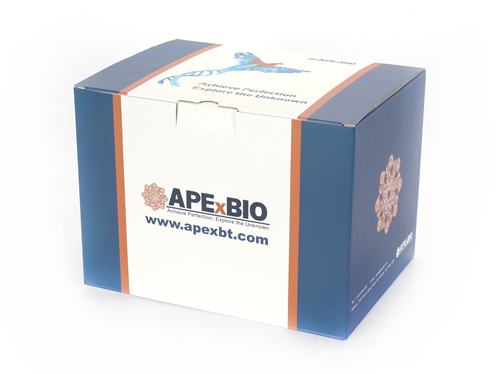Recombinant Human IL-8/CXCL8
Interleukin-8 (IL-8), also known as CXCL8, GCP-1, and NAP-1, is a widely expressed proinflammatory member of the CXC family of chemokines. Near its N-terminus, this 8-9 kDa chemokine contains an ELR motif which is important for its angiogenic properties [1]. IL-8/CXCL8 can associate into a homodimer or a heterodimer with CXCL4/PF4 [2], and it can also interact with matrix and cell surface glycosaminoglycans [3]. Mature human IL-8/CXCL8 shares 65%-69% amino acid (aa) sequence identity with canine, feline, and porcine IL-8/CXCL8 [4]. There is no IL-8/CXCL8 gene counterpart in rodent. N-terminal truncation by multiple proteases generates a range of shorter forms, and an alternative splice form of human IL-8/CXCL8 carries an eleven aa substitution at the C-terminus [5]. The bioactivity of IL-8/CXCL8 is regulated by these truncations, by IL-8/CXCL8 citrullination at Arg5 (N-terminal to the ELR motif) [6], and by the decoy receptor DARC [7]. IL-8/CXCL8 effects are mediated through CXCR1/IL-8 RA, which is also used by CXCL6, and through CXCR2/IL-8 RB, which is used by multiple CXC chemokines [1]. CXCR1 and CXCR2 associate into functional homodimers and heterodimers with each other [8]. Through both CXCR1 and CXC R2, CXCL8 promotes neutrophil adhesion to the vascular endothelium and migration to sites of inflammation [9]. It triggers the antimicrobial activation of neutrophils through CXCR1 [10].
Reference
[1]. Lazennec, G. and A. Richmond (2010) Trends Mol. Med. 16:133.
[2]. Nesmelova, I.V. et al. (2005) J. Biol. Chem. 280:4948.
[3]. Pichert, A. et al. (2012) Biomatter 2:142.
[4]. Schmid, J. and C. Weissmann (1987) J. Immunol. 139:250.
[5]. Mortier, A. et al. (2008) Pharmacol. Ther. 120:197.
[6]. Proost, P. et al. (2008) J. Exp. Med. 205:2085.
[7]. Neote, K. et al. (1994) Blood 84:44.
[8]. Munoz, L.M. et al. (2009) J. Immunol. 183:7337.
[9]. Gerszten, R.E. et al. (1999) Nature 398:718.
[10]. Jones, S.A. et al. (1996) Proc. Natl. Acad. Sci. USA 93:6682.
|
Accession # |
P10145.1 |
|
Alternate Names |
3-10C; AMCF-I; C-X-C motif chemokine 8; CXCL8; CXCL8SCYB8; Emoctakin; GCP1; IL8; |
|
Source |
Human embryonic kidney cell, HEK293-derived human IL-8/CXCL8 protein |
|
Protein sequence |
Ser28-Ser99 |
|
M.Wt |
8.5 kDa |
|
Appearance |
Solution protein. |
|
Stability & Storage |
Avoid repeated freeze-thaw cycles. It is recommended that the protein be aliquoted for optimal storage. 12 months from date of receipt, -20 to -70 °C as supplied. |
|
Concentration |
0. 2 mg/mL |
|
Formulation |
Dissolved in sterile PBS buffer. |
|
Reconstitution |
We recommend that this vial be briefly centrifuged prior to opening to bring the contents to the bottom. This solution can be diluted into other aqueous buffers. |
|
Biological Activity |
Measured by its ability to chemoattract BaF3 mouse pro-B cells transfected with human CXCR2. The ED50 for this effect is 0.2-1.0 ng/mL. |
|
Shipping Condition |
Shipping with dry ice. |
|
Handling |
Centrifuge the vial prior to opening. |
|
Usage |
For Research Use Only! Not to be used in humans. |
Quality Control & DataSheet
- View current batch:
-
Purity > 95%, determined by SDS-PAGE.
- Datasheet
Endotoxin: <0.010 EU per 1 ug of the protein by the LAL method.







